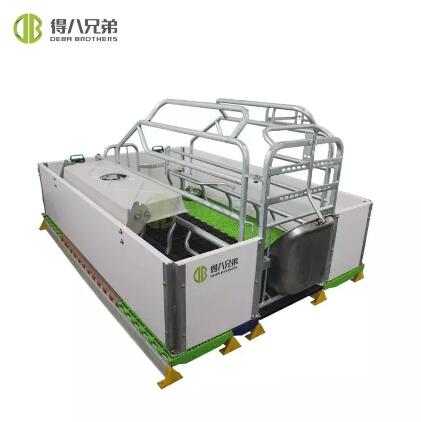Enhancing Animal Welfare and Hygiene: The Role of Flooring Design in European-Style Farrowing Crates
2024-02-22
In the realm of modern pig farming, the design of farrowing crates plays a critical role in ensuring the welfare of sows and piglets during the farrowing process. Among the various components of farrowing crate design, the flooring holds particular significance. In European-style farrowing crates, the flooring design is meticulously engineered to not only prioritize the comfort and safety of the animals but also to facilitate efficient hygiene management. Let's delve into how the flooring design in European-style farrowing crates contributes to both animal welfare and hygiene management.
Promoting Comfort and Safety
The flooring in European-style farrowing crates is designed with the utmost consideration for sow comfort and piglet safety. Unlike traditional farrowing crates, which may feature rigid or uncomfortable surfaces, European-style crates often incorporate materials that provide optimal traction and support for the sow. Non-slip surfaces help prevent injuries and discomfort, allowing sows to move around freely without the risk of slipping or sliding during farrowing.
Additionally, European-style farrowing crates may include adjustable heating elements integrated into the flooring. These heating elements ensure that the floor remains at an appropriate temperature, providing warmth and comfort to both the sow and her piglets. Maintaining an optimal thermal environment is crucial for piglet survival and growth, as well as for preventing chilling and promoting sow well-being.
Facilitating Hygiene Management
Hygiene management is paramount in pig farming to prevent the spread of diseases and maintain the health of the animals. The flooring design in European-style farrowing crates is engineered to facilitate easy cleaning and disinfection, thereby promoting a clean and hygienic environment for sows and piglets.
Many European-style farrowing crates feature removable flooring components or slatted designs, which allow for efficient waste removal and cleaning. Smooth surfaces and seamless joints minimize areas where dirt and bacteria can accumulate, reducing the risk of contamination and disease transmission. Additionally, the materials used in European-style farrowing crates are often resistant to moisture and corrosion, further enhancing their durability and hygiene properties.
Conclusion: A Holistic Approach to Farrowing Crate Design
In conclusion, the flooring design in European-style farrowing crates represents a critical component of overall welfare and hygiene management in pig farming. By prioritizing sow comfort, piglet safety, and ease of cleaning, European-style crates contribute to better welfare outcomes for the animals while also promoting a cleaner and more sanitary farrowing environment. As the industry continues to evolve, adopting a holistic approach to farrowing crate design—one that considers both animal welfare and hygiene management—is essential for sustainable and responsible pig production practices.



